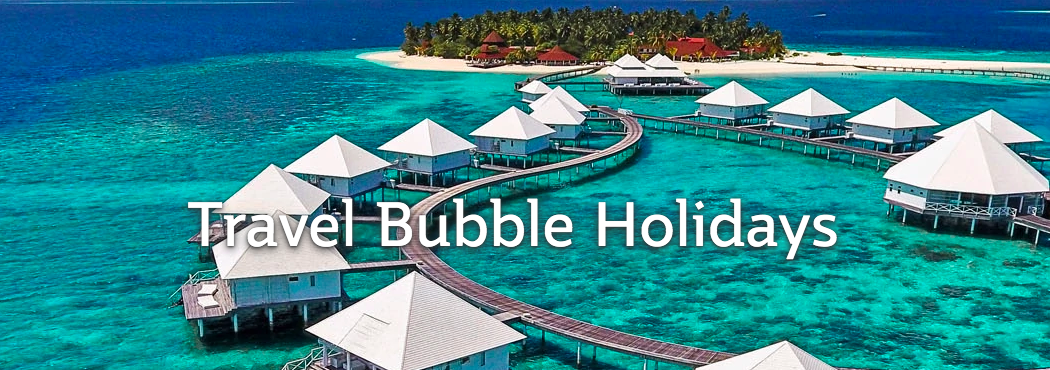Back in May, we had opined how travel bubbles can help kickstart the airline recovery process. While our initial vision was travel bubbles primarily between countries with low (or similar) COVID-19 infection rates to take off, that did not become mainstream. Instead, airlines took the lead to partner directly with hotels and destinations to launch their own private bubbles.
Why are airlines launching travel bubbles?
Airlines can no longer wait for governments to scale back blanket quarantines to re-build their businesses. Travel bubbles take long to implement if they are led by governments and burst easily, as we saw the promise of New Zealand – Australia bubble fade away. Airlines already have past relationships with hotels and resorts, which are also suffering. So why not identify countries that have taken proactive measures towards keeping tourist belts safe and work with the hotels there? Airlines can restart flights and fill them up through these privately-initiated bubbles.
So, how do these travel bubbles work?
- Travel bubbles typically involve testing all passengers on a flight prior to departure, so that everyone on board is COVID-19 negative.
- There is ground transportation to a single resort, maintaining the bubble outside the aircraft as well. COVID-19 insurance is included in the fare to give peace of mind.
- The hotels are mostly all-inclusive, which allows the guests to stay on the property for the duration of their stay.
- Finally, all hotel staff follow strict testing and isolation regimes so that no local community infections occur.
- Upon return, some of these travel bubbles allow testing on arrival to skip the local quarantine requirements.
SimpliFlying’s rapid response team has been working with a number of airlines to implement these travel bubbles. Here are a few examples of how some airlines are implementing them.
Qatar Airways + Maldives travel bubble
 Qatar Airways has launched “travel bubble holidays” with two resorts in the Maldives. While they are only bookable by residents of Qatar (a tiny population), the holidays offer exclusive use of resorts for Qatar Airways Holidays’ guests from Qatar. Each resort is situated on its own private island so you can rest assured that these exclusive use resorts are safe from a COVID-19 perspective. Guests can book these holidays without having to worry about going into quarantine or self-isolation upon return.
Qatar Airways has launched “travel bubble holidays” with two resorts in the Maldives. While they are only bookable by residents of Qatar (a tiny population), the holidays offer exclusive use of resorts for Qatar Airways Holidays’ guests from Qatar. Each resort is situated on its own private island so you can rest assured that these exclusive use resorts are safe from a COVID-19 perspective. Guests can book these holidays without having to worry about going into quarantine or self-isolation upon return.
Swoop + Jamaica Trusted Travel Getaways

The travel bubble Swoop has put in place is unique because it leverages the hotel’s “IHG Clean” promise and Jamaica’s resilient corridor, in addition to the airline’s own biosafety measures. While travellers can’t skip quarantines yet upon return, efforts are underway to make that happen via on-arrival testing.
Virgin Atlantic Escape Pass

Countries on offer include Barbados, Antigua, Grenada and Tobago, with plans to include Jamaica and other Caribbean islands as they are added to the UK government’s Travel Corridor list.
Singapore – Hong Kong air travel bubble
The only example of a successful government-led travel bubble will kick-off between Singapore and Hong Kong this weekend. Both Singapore Airlines and Cathay Pacific have been authorized to operate limited flights between Singapore and Hong Kong. It’s a complex bubble that does not include hotels or all-inclusive stays.
Both countries have had a very low number of COVID-19 cases in the past couple of months. Hence, there’s a “reverse-quarantine” in place that requires travellers to have remained in Hong Kong or Singapore for at least 14 days prior to their travel date. All travellers will require up to three PCR tests for their round trip – including one taken upon arrival in Hong Kong which requires a prior reservation and a four-hour wait (longer than the flight!). While I’ve heard that most of the flights are full, I imagine the people flying are mostly businessmen or finance executives who urgently needed to travel.
Are travel bubbles here to stay?
While travel bubbles may act as catalysts to kickstart travel, are they a long term solution? Probably not. Airlines desperately need to fill up their aircraft and get more aircraft back in the air. Travel bubbles in conjunction with hotels and destinations are a way to do that immediately.
Moreover, we know that there will be a lot of changes to the travel customer experience in the future. Travel bubbles are a way to test out the waters in a limited way and gear up before everyone starts flying again. In the short term, I can foresee these travel bubbles being expanded to include other international and even domestic destinations. Until governments scale back on blanket quarantine regulations, travel bubbles will serve the airline industry well.
What do you think?
SimpliFlying has set up a Rapid Response Team to help airlines be ready for post-corona travel’s realities. The team has been holding Board-level briefings to orient executives with the new touchpoints. We have also been working on testing strategies with airlines and airports. We will be happy to do a 30-minute call with your executive team to run through the detailed post-corona customer journey map, to begin with, and review your testing strategy. Get in touch to set up a call.

